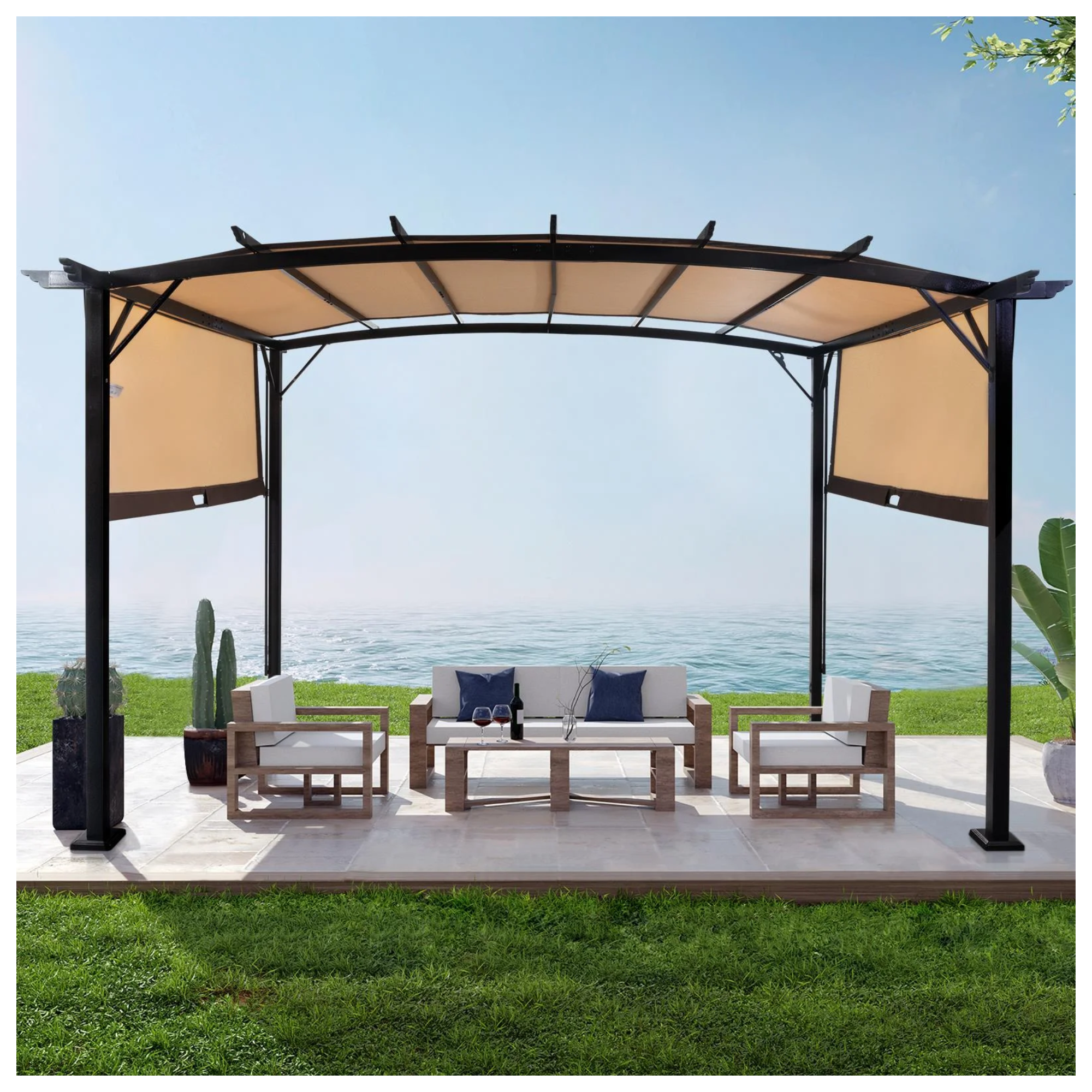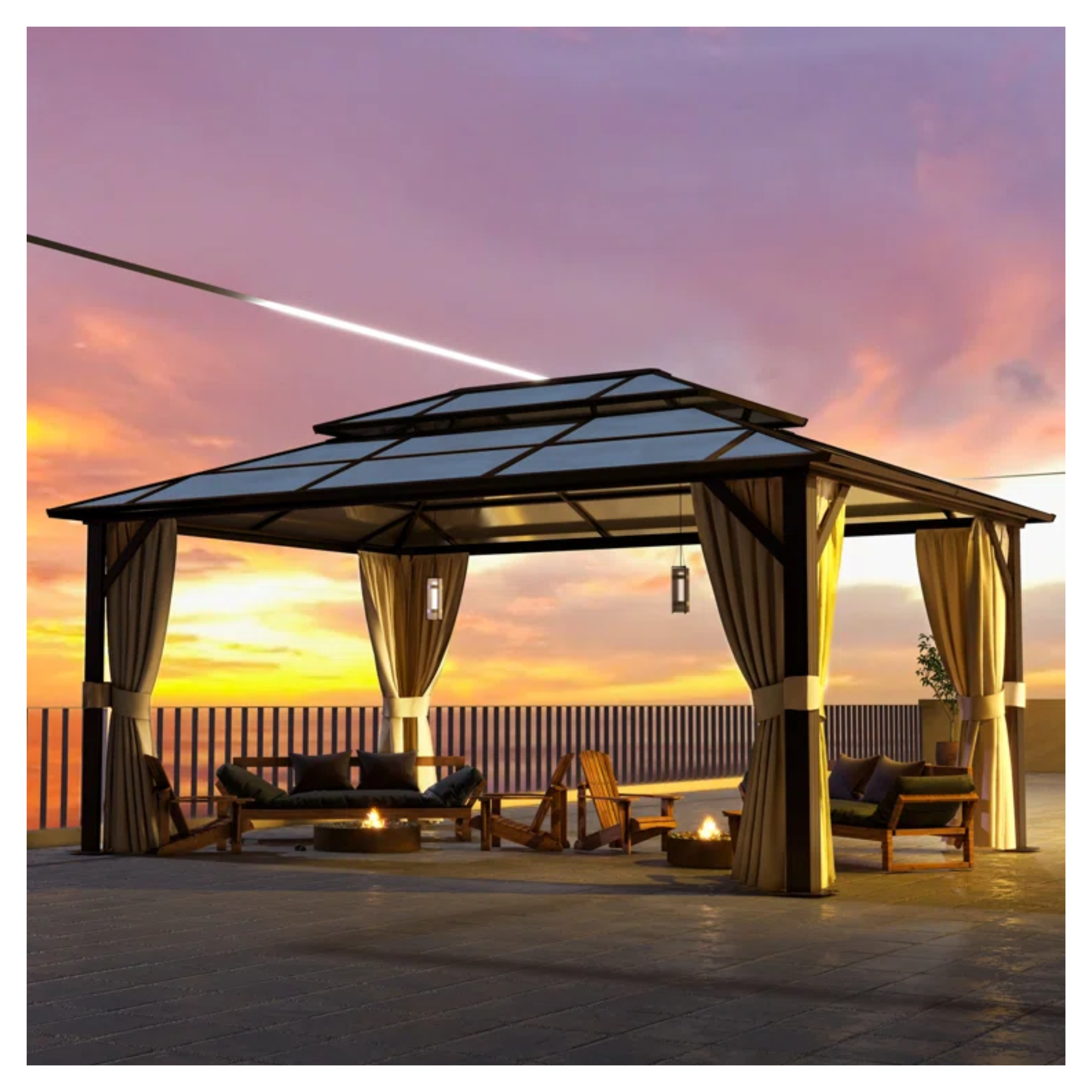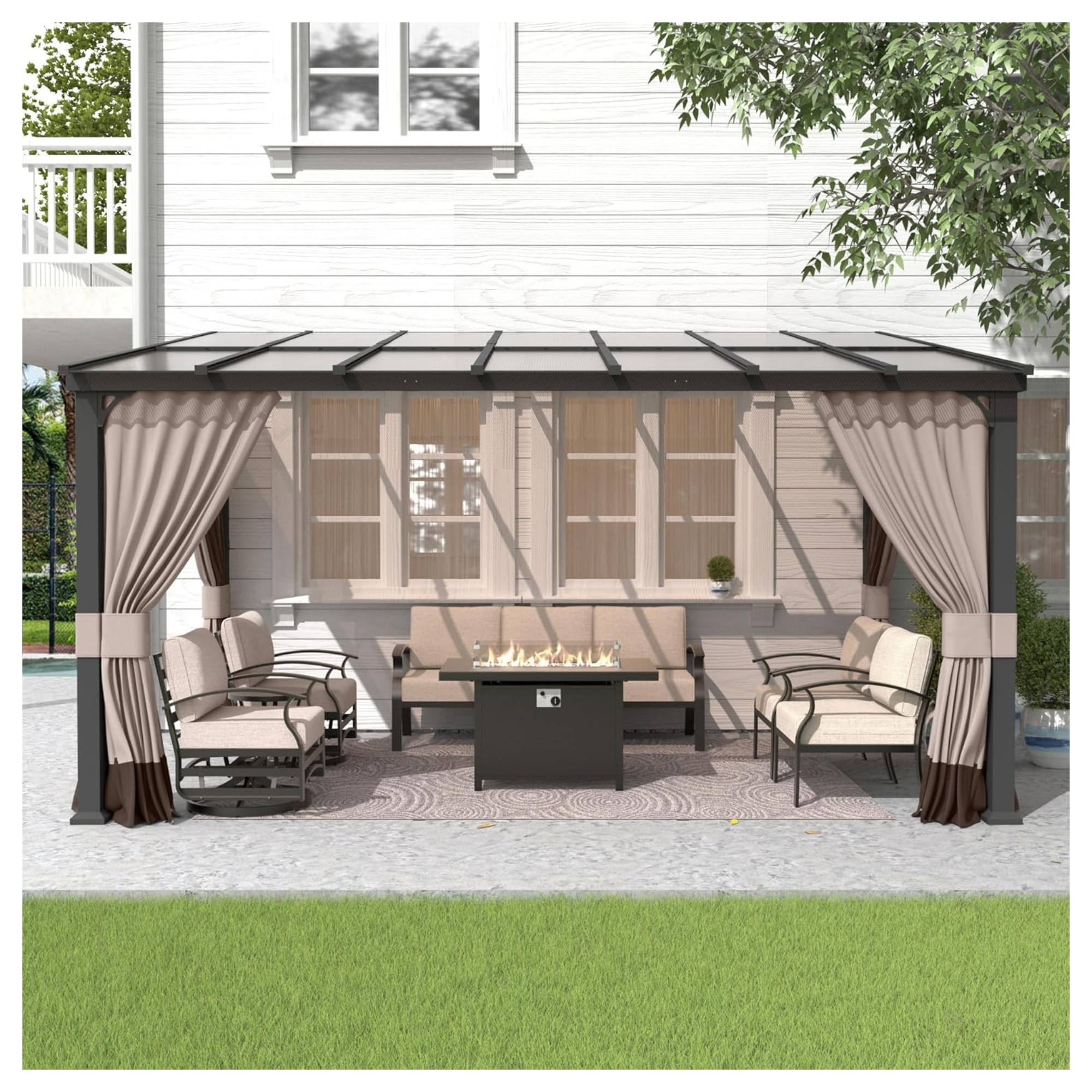How Much Wind Can a Pergola Withstand? The One Thing to Know for Outdoor Structures That Last
Save yourself a repurchase by making sure you buy a pergola that is sturdy enough for your local climate

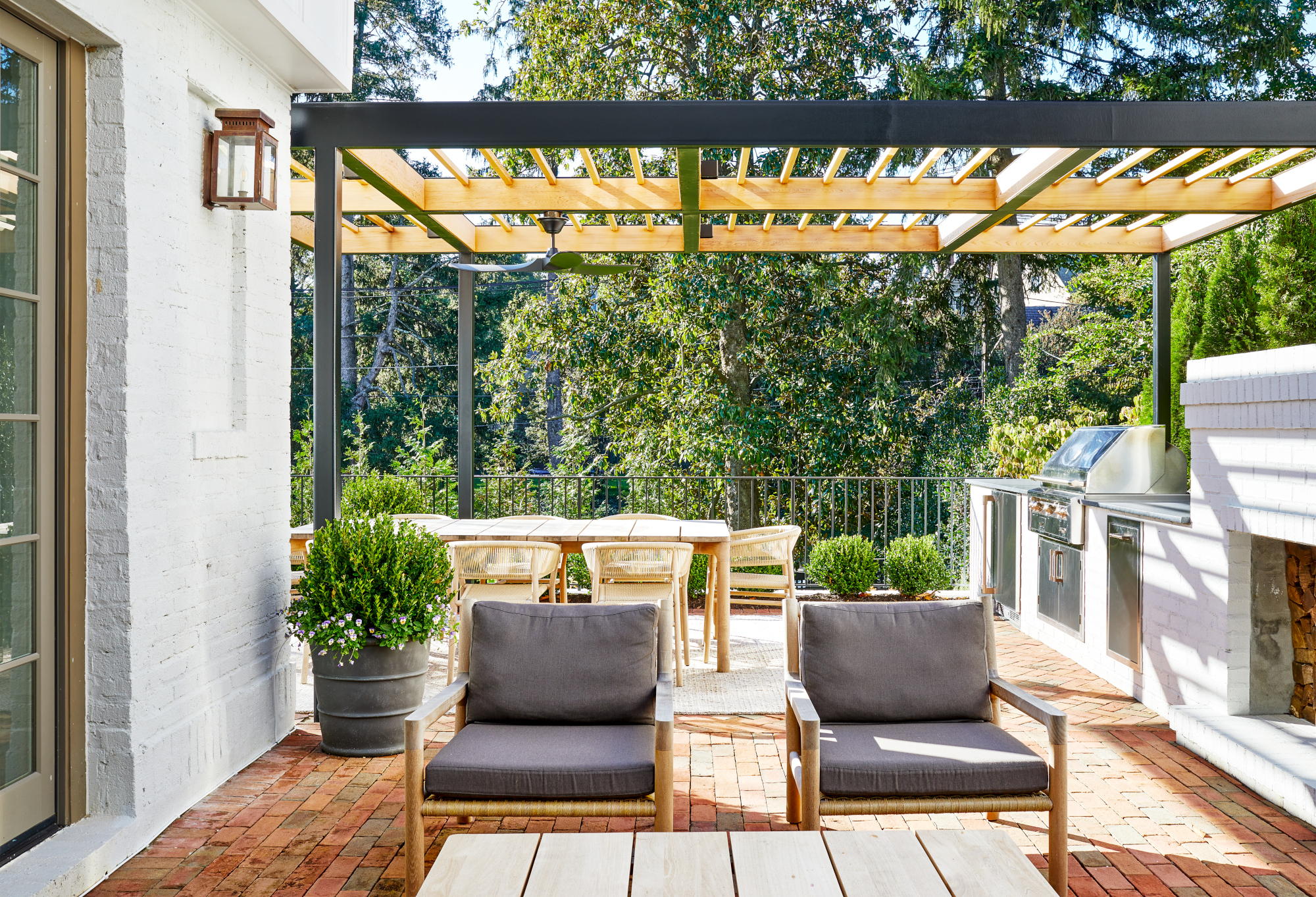
While you might be enjoying the fruits of a newly renovated backyard during the summer months, you also need to know it's up to handling more inclement weather.
And this doesn't just mean waterproof couches and weather-resistant pillows — it's also important for outside structures like pergolas that you can't necessarily store away during winter. Since they're such a big investment it's important to ensure that they stand sturdy in the face of storms. But how do you know how much wind a pergola can actually withstand?
Curious to know more about wind resistance in pergolas, we consulted the experts and they have shared their expertise with us. So before you bring some of your pergola ideas to life, consider these key factors that experts take note of for long-standing outdoor furnishing.
How Much Wind Can a Pergola Take?
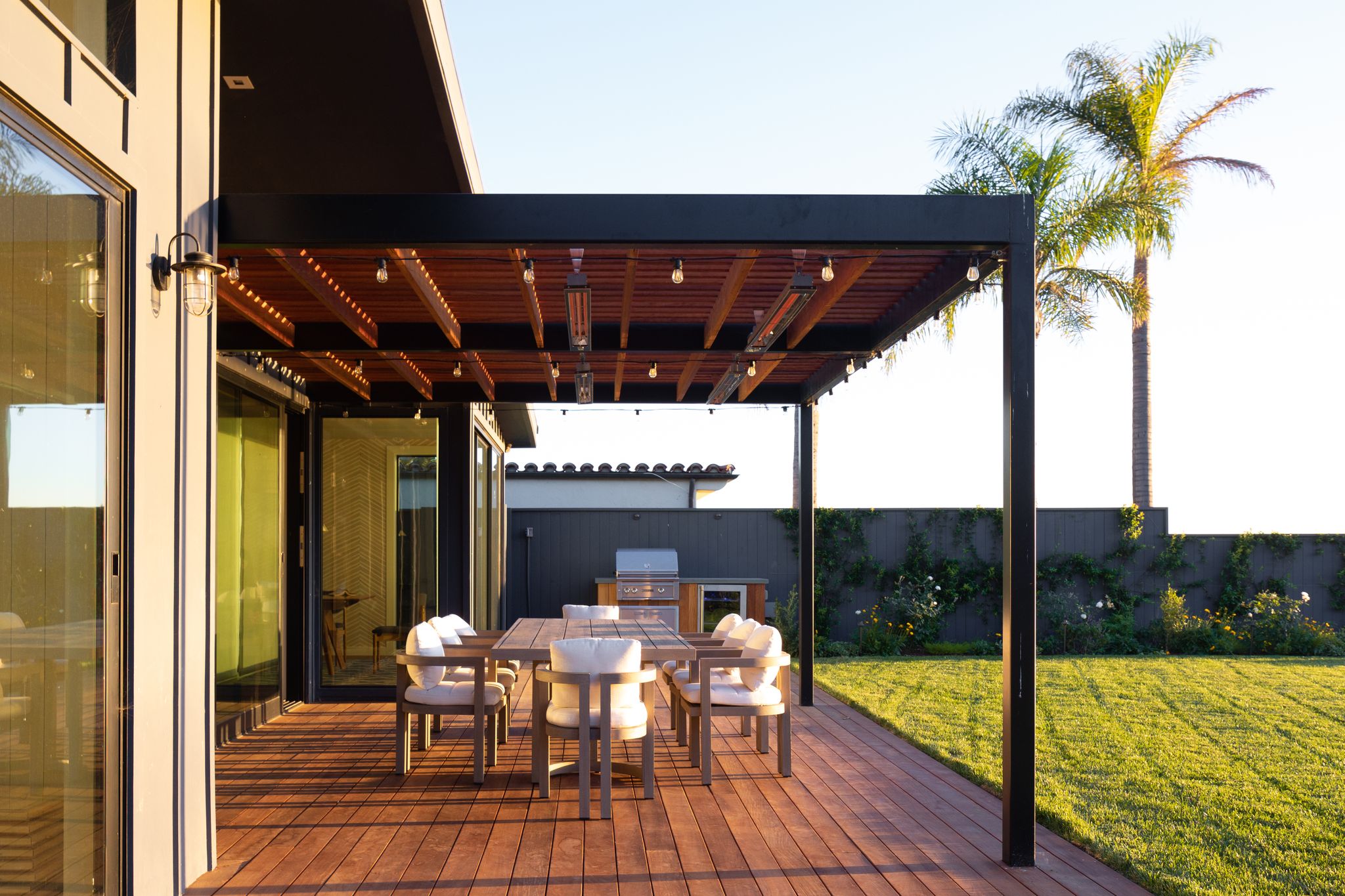
In conversation with Aaron Brundage, Director of Operations at System Pavers, he tells us that two of the biggest factors to consider when questioning wind resistance for pergolas are sturdy design and professional installation.
"Different pergolas have different wind ratings with a typical range being between 70-100 miles per hour," he notes. "However, it can vary as much as 50 to 130 mph or more depending on installation."
This is one of the unfortunate shortcomings of DIY pergolas. While pergola kits are perfect for areas that don't experience high-speed winds, they can be a hazard in places that do. Aaron explains that it’s important to work with a professional to choose one rated best for your climate and to ensure that it's properly installed.
Landscaping expert Joe Gerrior tells us that wood pergolas typically withstand 50-70 mph winds. However, he points out that aluminum pergolas are generally more wind-resistant, rated for over 70 miles per hour. But thanks to their heightened strength, they're also more expensive.
The Livingetc newsletters are your inside source for what’s shaping interiors now - and what’s next. Discover trend forecasts, smart style ideas, and curated shopping inspiration that brings design to life. Subscribe today and stay ahead of the curve.
How to Make Your Pergola Wind-Resistant

Ideally, it's better to employ aluminum pergolas in high-wind areas. However, there are certain steps that can be taken to further ensure your pergola's safety, regardless of its material composition.
According to Aaron, you can sometimes increase a pergola’s wind resistance by installing it in a more protected location. He also finds that planting trees or tall shrubs can act as windbreakers as well.
"In regions that have harsh weather conditions, it’s always a good idea to reinforce your pergola," Aaron adds. "This will help not only with wind resistance, but also in how it holds up to snowfall, extreme temperature fluctuations, and more." Joe tells us that he usually opts for 4x4 posts buried in concrete, diagonal cross-bracing, and bolting the structure to nearby buildings for a resilient pergola setup. "For coastal areas, we overbuild and secure posts in concrete footings extending 6 feet deep," he advises.
Having said that, if you're wondering how to build a pergola or find yourself in need of added reinforcement of the structure, it's best to consult a local professional to help you. This way you can find reassurance in the consultation of a professional and make sure your home and your pergola are safe.
Our top pergolas for a stylish backyard
It's important to make educated decisions when purchasing potentially big-budget items like a pergola. So we recommend assessing the climatic tendencies of your locality and purchasing a sturdy well-built pergola if you find yourself in a wind-strong area.
And if you'd like a more hands-off experience, it's always smart to leave it to the professionals. They can give you an accurate pergola reading and will also help you put together and reinforce the structure. Then you can lounge in your pergola stress-free and truly reap the rewards of a chic outdoor space.
FAQs
Should pergolas be open or closed for high wind?
It's best to keep the pergola partially open in high wind as this will allow the draft to pass through, therefore minimizing the risk of damage to the structure. So if you happen to notice high wind alerts, open the louvered roof until the windy weather subsides.
How do you protect your pergolas from strong wind?
If you live in hurricane-prone areas or simply a place that experiences plenty of strong winds, then it's important to make sure that your pergola caters to such weather.
Additionally, reinforced construction can help further secure your pergola and keep it in place even in high wind zones. This includes firmly securing the pergola to the ground, using more resilient materials, and adding hurricane ties for rafters, like these from Amazon for increased safety.

Amiya is a Home Wellness Writer at Livingetc. She recently graduated with a Masters Degree in Magazine Journalism from City, University of London, and has lent her words to beauty, fashion, and health sections of lifestyle publications including Harper’s Bazaar and Women’s Health. Her experience as a research analyst has equipped her with an eye for emerging trends. When she’s off the clock, she can be found reading, listening to music, or overanalyzing her latest Co-Star update.
